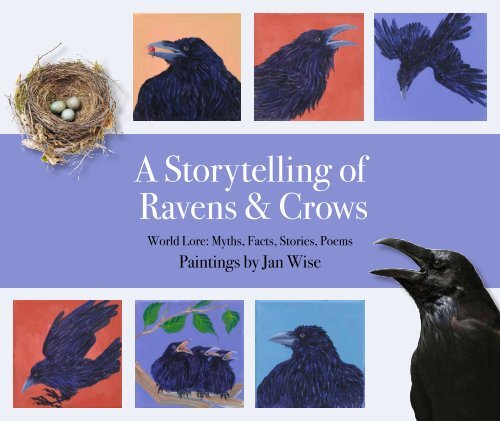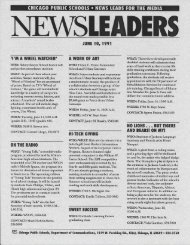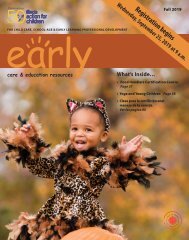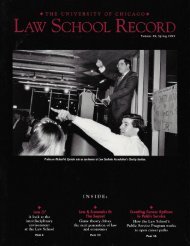Book Design — Ravens by Jan Wise
You also want an ePaper? Increase the reach of your titles
YUMPU automatically turns print PDFs into web optimized ePapers that Google loves.
A Storytelling of<br />
<strong>Ravens</strong> & Crows<br />
World Lore: Myths, Facts, Stories, Poems<br />
Paintings <strong>by</strong> <strong>Jan</strong> <strong>Wise</strong>
A Storytelling of<br />
<strong>Ravens</strong> & Crows<br />
World Lore: Myths, Facts, Stories, Poems<br />
Paintings <strong>by</strong> <strong>Jan</strong> <strong>Wise</strong><br />
Washburn, Wisconsin<br />
2012
Acknowledgments<br />
A special thank you to Paul Lantz, a Canadian photographer<br />
who allowed me to use his images of ravens as reference photos.<br />
Special thanks also to Catherine Lange, who designed this book and<br />
created the illustrations that accompany “Raven Frees the Light.”<br />
Copyright © 2012 <strong>Jan</strong> <strong>Wise</strong><br />
All rights reserved<br />
Learn more about ravens and crows, as I did, <strong>by</strong> reading the world<br />
lore, myths, facts, stories, and poems found in these books:<br />
Catherine Feher-Elston. <strong>Ravens</strong>ong: A Natural and Fabulous History<br />
of <strong>Ravens</strong> and Crows. New York, Penguin, 1991.<br />
Lynn Hassler. The Raven: Soaring Through History, Legend & Lore.<br />
Tucson, Arizona, Rio Nuevo Publishers, 2008.<br />
Bernd Heinrich. Mind of the Raven. New York, First Vintage <strong>Book</strong>s, 1991.<br />
Bernd Heinrich. <strong>Ravens</strong> in Winter. New York, Summit <strong>Book</strong>s, 1989.<br />
John M. Marzluff & Tony Angell. In the Company of Crows and <strong>Ravens</strong>.<br />
New Haven, Connecticut, Yale University, 2005.<br />
Candace Savage. Bird Brains: The Intelligence of Crows, <strong>Ravens</strong>,<br />
Magpies, and Jays. San Francisco, Sierra Club, 1995.
Introduction<br />
Many artists choose their subjects, sometimes,<br />
subjects choose their artists. Such is the case with the<br />
Raven and artist <strong>Jan</strong> <strong>Wise</strong>. It makes perfect sense when<br />
you consider the Orvid characteristics: intelligent,<br />
curious, mischievous, ingenious, loyal, socially<br />
conscious and cooperative. In describing the Orvid<br />
family traits, it is easy to consider <strong>Wise</strong> to be a relative.<br />
Feathered creatures are often assumed vain since<br />
they spend a considerable amount of time preening<br />
and displaying their plumed finery. Who better, to<br />
choose as your portraitist, than the skilled, intuitively<br />
nuanced artistry of <strong>Jan</strong> <strong>Wise</strong>. Her love of the natural<br />
and mythological realms of birds is aptly celebrated in<br />
these pages.<br />
May this book of images and legends be a shiny object<br />
that appeals to the crow in you.<br />
Penny Perry
This is the story about crows:<br />
One is for sorrow<br />
Two is for mirth<br />
1<br />
2
3<br />
4<br />
Three is a wedding<br />
Four is a birth<br />
Old American Rhyme
In the year 874<br />
The Viking Floki set out from Norway to find the mythical island to the west.<br />
Floki took 3 ravens with him on the voyage. At certain intervals of time, each raven was released from the boat.<br />
The first raven flew back east toward Norway. The second raven flew back to the boat. The third raven led Floki and his Vikings to<br />
the shore of Iceland. From that time forward, Floki was known as Raven-Floki.
Marcus: The Mission of the Raven:<br />
Genesis 8.7<br />
When the seventh day arrived,<br />
I ( Noah ) released a dove to go free,<br />
the dove went and returned,<br />
no landing place came to view, it turned back.<br />
I released a swallow to go free,<br />
the swallow went and returned,<br />
no landing place came to view, it turned back.<br />
I sent a raven to go free,<br />
the raven went forth, saw the ebbing of the waters,<br />
it ate, circled, left droppings, did not turn back.
Raven Was Called YAAHL<br />
The original Yaahl was snow white. He, Yaahl, saw that his people were cold at night and huddled on the shore. Knowing that they could<br />
benefit from heat from a fire, he flew to the 7 sisters of the Pleiades high in the sky and stole fire from their camp. While<br />
he was flying back with the fire, he was singed black and his beak was charred. Raven has been black ever since….<br />
From the Haida: First people of the Pacific Northwest
Raven Sun Symbol<br />
In China, Raven was the<br />
sun symbol called Yatagarasu.<br />
Raven belonged to the<br />
Sun Goddess Amaterasu.<br />
In the Hellenized world,<br />
Raven belonged to the<br />
sun god Apollo.<br />
Raven represented the<br />
winter or the Boreal side<br />
of the sun.<br />
In the Northwest coast<br />
first people nations,<br />
raven saved the sun<br />
from a selfish person<br />
who had hidden the sun<br />
away for his own private use<br />
and returned it to all<br />
the people, animals<br />
and plants.
Raven<br />
Frees the Light<br />
A selfish man stole all the light and stored<br />
the sun, moon and stars in cedar boxes on the<br />
other side of the sky. The people pleaded with raven<br />
to help return the light to them. Raven finally consented<br />
and flew through the hole in the sky to the camp. The selfish<br />
man had a beautiful daughter that Raven observed for many<br />
days. One day when she went to draw water from the lake, Raven<br />
turned himself into a pine needle and when she took a drink from<br />
her container, she became pregnant with raven. When raven ba<strong>by</strong><br />
was born he had a nose like a beak but his grandfather and mother<br />
loved him and he became very spoiled. Raven ba<strong>by</strong> would scream<br />
until his grandfather gave him a box of light. First he was given<br />
the moon box, then the star box and after much fussing and<br />
fussing, finally the sun box, When he had all the boxes he<br />
unfurled his great wings, and took the light back to the<br />
people on the other side of the sky.<br />
from the Pacific Northwest<br />
Original Peoples
181 Names<br />
A University of Georgia<br />
anthropologist has confirmed<br />
approximately 181 names<br />
for crows and ravens:<br />
This is from 136 different<br />
human languages on at<br />
least five separate continents.<br />
Many of these words<br />
are onomatopoetic.
Dust of Snow<br />
The way a crow<br />
Shook down on me<br />
The dust of snow<br />
From a hemlock tree<br />
Has given my heart<br />
A change of mood<br />
And saved some part<br />
Of a day I had rued.<br />
Robert Frost
King Arthur<br />
Have not your worships read the annals and histories of England, in which are<br />
recorded the famous deeds of King Arthur…with regard to whom it is an ancient<br />
tradition, and commonly received<br />
all over that kingdom of Great<br />
Britain, that this king did not die,<br />
but was changed <strong>by</strong> magic art into<br />
a raven, and that in process of time<br />
he is to return to reign and recover<br />
his kingdom and scepter; for<br />
which reason it cannot be proved<br />
that from that time to this any<br />
Englishman ever killed a raven?<br />
from Don Quixote
Prophecy of the<br />
Circling Raven<br />
The Salishan people of North Idaho<br />
were called the Coeur d’Alene or<br />
Flathead Indians. Their Shamans<br />
could speak to the crows and<br />
ravens. The bird, said to have a<br />
blue aura, told the people about the<br />
coming of the white man, said to be<br />
the prophecy of the circling raven.<br />
One of the other prophecies of the<br />
circling raven told the people of a<br />
savior born. The prophecy was told<br />
in 1740. The story included the<br />
birth at the winter solstice, and that<br />
children should be fed extra and<br />
receive a gift, and that there should<br />
be no fighting. The story included<br />
the prophecy of the black robes<br />
who will tell the rest of the story.<br />
For 100 years, the Coeur d’Alene<br />
had scouts searching for the black<br />
robes. In 1830 they heard of the<br />
black coats and were told that they were in what is now St. Louis, Missouri. Finally, in 1840 they were able<br />
to bring the Priests to their nation in what is now Utah.<br />
From the Salishan people of North Idaho
Rain Rain<br />
Rain Rain, this bird seems to say.<br />
<strong>Ravens</strong> were thought to be able<br />
to prophesy and to be able to<br />
predict bad weather.
History<strong>—</strong>The Flight of Four Crows<br />
Before European settlers, the Lenape Nation hunted from Delaware to New York. The tribe<br />
conceived of history as the flight of 4 crows. The first was the time before European contact,<br />
the flights of the second and third crows relate to the period of persecution and exile. The<br />
flight of the 4th crow is the time when Lenape culture will be restored, which began in the<br />
1960’s with the American Indian Movement.
Clever Crow<br />
A helpful crow taught his fellows<br />
To break a shell <strong>by</strong> dropping it<br />
On a rock and then swooped<br />
Down to claim the food for himself.<br />
Aesop’s Fable
Two <strong>Ravens</strong><strong>—</strong><br />
Huginn (Thought)<br />
and Muninn<br />
(Memory)<br />
Two ravens sit on the Norse<br />
God Odin’s shoulders and<br />
bring to his ears all that they<br />
see and hear. Their names<br />
are Huginn and Muninn.<br />
At dawn, Odin sends them<br />
out to fly over the whole<br />
world, and they come<br />
back at night. Thus he gets<br />
information about many<br />
things, and hence Odin is Huginn and Muninn<br />
called Rafnagud (Raven-<br />
Fly everyday<br />
Over the great earth<br />
God) as is here said:<br />
I fear for Huginn<br />
That he may not return<br />
Yet, I am more anxious for Muninn.
Raven Bring Us Luck<br />
Make prayers to the Raven.<br />
Raven that is,<br />
Raven that was,<br />
Raven that always will be.<br />
Make prayers to the Raven.<br />
Raven bring us luck.<br />
From the Koyukon<br />
of the Pacific Northwest
Elsewhere, you may have observed a gaggle of geese,<br />
a convocation of eagles, or a kettle of hawks…<br />
in this book, discover a storytelling of ravens and crows.
















